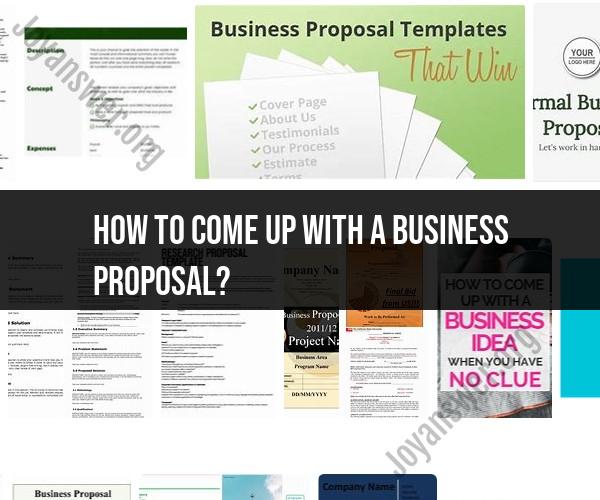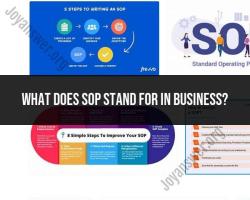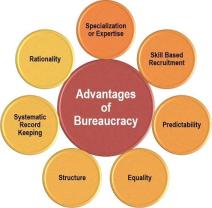How to come up with a business proposal?
Creating a business proposal involves a structured and well-thought-out process. Whether you're proposing a new project, seeking partnerships, or responding to a request for proposal (RFP), the following step-by-step guide will help you create an effective business proposal:
1. Understand the Purpose:
- Clarify the purpose of your proposal. Are you seeking funding, presenting a new project idea, responding to an RFP, or pitching a product or service? Knowing the purpose guides your approach.
2. Research the Audience:
- Understand your audience's needs, preferences, and expectations. Tailor your proposal to address their specific concerns and requirements.
3. Gather Information:
- Collect all relevant information and data that will support your proposal. This may include market research, financial projections, project plans, or case studies.
4. Create a Title Page:
- Start with a title page that includes your company's name, logo, contact information, the title of the proposal, and the date.
5. Write an Executive Summary:
- Begin with an executive summary that provides a concise overview of the proposal. Summarize the key points, including the problem, solution, objectives, and what you're seeking.
6. Define the Problem or Need:
- Clearly state the problem or need that your proposal aims to address. Use data, examples, and evidence to illustrate the issue.
7. Present Your Solution:
- Explain your proposed solution in detail. Describe how your product, service, or project will resolve the problem and why it's the best option.
8. Outline Objectives and Goals:
- Define the specific objectives and goals of the proposal. Make them measurable and aligned with the problem you identified.
9. Describe Methodology or Approach:
- Explain the methodology or approach you will use to implement your solution. This may include a step-by-step plan, a timeline, and key milestones.
10. Specify Scope of Work:
- Define the scope of work, including tasks, responsibilities, deliverables, and what's not included in the proposal.
11. Provide Budget and Pricing:
- Present a detailed budget that breaks down the costs associated with your proposal. Include pricing for products or services and any additional expenses.
12. Create a Timeline or Schedule:
- Share a timeline that outlines the project's phases and expected completion dates. This helps clients understand the project's duration.
13. Include Company Background:
- Offer information about your company, including its history, expertise, and relevant experience. Highlight what sets your business apart.
14. Use Testimonials and Case Studies:
- Include client testimonials, success stories, or case studies to demonstrate your ability to deliver results.
15. Introduce the Team and Key Personnel:
- Introduce the key team members who will be involved in the project. Provide their qualifications, expertise, and relevant experience.
16. Define Terms and Conditions:
- Specify any terms and conditions related to the proposal, such as warranties, guarantees, intellectual property rights, and liability.
17. Write a Conclusion:
- Summarize the proposal's key points and reiterate why it's the best solution for the recipient's needs.
18. Add a Call to Action:
- Encourage the recipient to take the next steps, whether that's signing a contract, scheduling a meeting, or making a purchase.
19. Include Appendices and Supporting Documents:
- Attach any relevant documents, such as product specifications, legal agreements, certifications, or additional research data, in the appendices.
20. Proofread and Review:
- Carefully review and proofread your proposal to ensure it's free from errors, is well-organized, and has a professional tone.
Remember to tailor your business proposal to the specific needs and preferences of your audience. A well-structured and persuasive proposal can significantly enhance your chances of securing business opportunities, partnerships, or funding.
The Art of Crafting a Business Proposal
A business proposal is a document that is used to persuade a potential client to choose your company's products or services. A well-crafted business proposal can be a powerful tool for winning new business.
Key Steps in Creating a Compelling Business Proposal
Here are some key steps in creating a compelling business proposal:
- Define the purpose and objectives of your proposal. What do you hope to achieve with your proposal? Are you trying to win a new client, secure funding, or partner with another company? Once you know your purpose and objectives, you can tailor your proposal accordingly.
- Tailor your proposal to the target audience. Who are you writing your proposal for? What are their needs and pain points? Tailor your proposal to address their specific needs and concerns.
- Conduct your research. Before you start writing your proposal, it is important to conduct your research. This will help you to understand the client's business, their industry, and their competitors. The more you know about the client, the better equipped you will be to write a proposal that meets their needs.
- Develop a strong value proposition. Your value proposition is a statement that explains why your company is the best choice for the job. It should be clear, concise, and persuasive.
- Write a compelling executive summary. The executive summary is a one-page overview of your proposal. It should highlight the key points of your proposal and explain why your company is the best choice for the job.
- Structure your proposal effectively. A well-structured proposal is easy to read and understand. It should be divided into sections and headings, and it should use clear and concise language.
- Proofread your proposal carefully. Before you submit your proposal, be sure to proofread it carefully for any errors in grammar, spelling, or punctuation.
Defining the Purpose and Objectives of Your Proposal
The first step in writing a business proposal is to define the purpose and objectives of your proposal. What do you hope to achieve with your proposal? Are you trying to win a new client, secure funding, or partner with another company?
Once you know your purpose and objectives, you can tailor your proposal accordingly. For example, if you are trying to win a new client, you will need to focus on demonstrating how your products or services can help them achieve their business goals. If you are trying to secure funding, you will need to focus on highlighting the potential return on investment.
Tailoring Your Proposal to the Target Audience
Who are you writing your proposal for? What are their needs and pain points? Tailor your proposal to address their specific needs and concerns.
For example, if you are writing a proposal to a company that is struggling to increase sales, you will need to focus on how your products or services can help them generate more leads and close more deals. If you are writing a proposal to a company that is looking to reduce costs, you will need to focus on how your products or services can help them save money.
Elements of a Well-Structured Business Proposal
A well-structured business proposal typically includes the following elements:
- Cover letter: The cover letter is a brief overview of your proposal and why you are the best choice for the job.
- Executive summary: The executive summary is a one-page overview of your proposal. It should highlight the key points of your proposal and explain why your company is the best choice for the job.
- Problem statement: The problem statement is a brief description of the client's problem or need.
- Proposed solution: The proposed solution is a detailed explanation of how your products or services can solve the client's problem or meet their need.
- Benefits: The benefits section highlights the key benefits that the client will receive by working with your company.
- Pricing: The pricing section provides a detailed breakdown of your pricing.
- Call to action: The call to action tells the client what you want them to do next, such as schedule a consultation or sign a contract.
By following these tips, you can write a business proposal that will persuade potential clients to choose your company's products or services.













